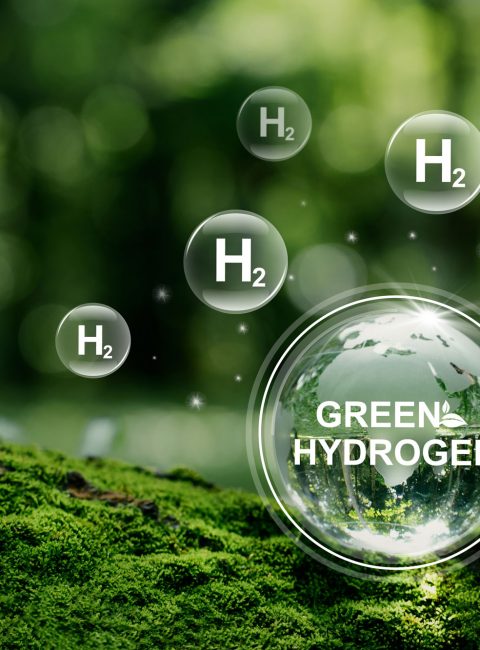 >
Spotlight October 2023: Improved hydrogen production through novel catalyst made of three metals
>
Spotlight October 2023: Improved hydrogen production through novel catalyst made of three metals
Hydrogen is one of the important energy carriers of the future when it comes to climate-relevant energy supply. For example, surplus electricity from wind turbines or solar plants can be converted into hydrogen, allowing the otherwise unused energy to be stored for longer periods. This hydrogen can be used to power trucks and buses for local public transport as well as other vehicles in an environmentally and climate-friendly way, or it can be converted back into electricity. However, the production of hydrogen using electricity has so far been relatively inefficient, so catalysts are being feverishly sought to help improve this process.
One possibility now seems to have been discovered in a novel catalyst. Korean researchers have synthesized this catalyst from the three known metals nickel, palladium and platinum, which enables the production of hydrogen about 8 times better than previous platinum-carbon catalysts. This high activity of the catalyst is possible due to the very small subunits in nanometer size. Nickel/platinum and palladium/platinum interfaces are created, which are arranged in a specific order to each other and thus considerably facilitate the processes of hydrogen production.
Such and other expected developments in catalyst chemistry will help secure future energy supplies and contribute to a sustainable and environmentally friendly energy supply.
Original publication:
Gu, B.S., Dutta, S., Hong, Y.R., Ngome Okello, O.F., Im, H., Ahn, S., Choi, S.Y., Woo Han, J., Ryu, S., and Lee, I.S. (2023). Angew Chem Int Ed Engl 62, e202307816.

Weitere Spotlights
Spotlight August 2021: Towards FAIR nanosafety data
In August we would like to present a paper on FAIR data. The paper published in Nature Nanotechnology in June 2021 summarises the challenges and provides recommendations for the efficient reuse of nanosafety data in line with the recently established FAIR guiding principles: findable, accessible, interoperable and reusable. This article summarises the know-how on the […]
Read moreSpotlight December 2020: Rethinking Nanosafety – Part II
In December we would like to draw attention to the special issue: Rethinking Nanosafety – Part II in small. In the July Spotlight we already presented Part I. This special issue “Rethinking Nanosafety – Part II” also features research papers by renowned scientists in the field of nanosafety research. The first part of this special […]
Read moreSpotlight June 2022: From small to clever – What does the future hold for the safety and sustainability of advanced materials?
The smallest particles in materials research, nanoparticles, have occupied us intensively for more than 20 years to elucidate and further investigate their safety for humans and the environment. Now, however, the development is going from “small = nano” to “clever = advanced”, as discussed in a contribution by international scientists. Thereby, it is a great […]
Read moreSpotlight December 2021: Silica nanoparticles improve plant disease resistance
The resistance of plants to various pathogens is often increased in agriculture with various chemicals (“fertilizers”). A new direction is being taken with the use of nanoparticles. These can be sprayed on the plants. In the present study, the model plant Arabidopsis was used to investigate whether silicon dioxide nanoparticles (SiO2) can increase resistance to […]
Read more


